Pasta Carbonara Recipe (Macaroni Alla Carbonara)
Think you know Pasta Carbonara? Think again. This Roman classic isn’t just about tossing pasta with eggs and bacon.
It’s a delicate dance of timing and technique, where the heat of al dente noodles meets a silky blend of eggs and Pecorino Romano, all brought together by the savory depth of guanciale—no cream, no shortcuts—just pure, unadulterated Italian comfort food.
Pasta Carbonara, a quintessential Italian dish, celebrates simplicity and flavor. Originating from Rome, this classic pasta dish has captivated taste buds worldwide with its rich, creamy sauce and salty, savory goodness.
At its core, Pasta Carbonara is composed of just a few key ingredients: pasta, eggs, pancetta or guanciale (Italian cured pork cheek), Pecorino Romano cheese, and black pepper. The magic lies in how these ingredients come together to create a dish far greater than the sum of its parts.
The process begins by cooking the pasta—traditionally spaghetti or rigatoni—until al dente. Meanwhile, the pancetta or guanciale is crisped up in a pan, releasing its delicious fat. Once the pasta is cooked, it’s tossed with the rendered pork and its flavorful fat, creating a luscious base for the sauce.
The show’s star is the sauce, which combines eggs with grated Pecorino Romano cheese and a generous amount of freshly ground black pepper. The heat from the pasta and pancetta gently cooks the eggs, creating a creamy, velvety coating that clings to every strand of pasta.
The beauty of Pasta Carbonara lies in its simplicity and the quality of its ingredients. Each component is crucial, contributing its unique flavor and texture to the final dish. The salty richness of the pancetta or guanciale balances perfectly with the creaminess of the eggs and cheese, while the black pepper adds a subtle kick of heat and complexity.
While Pasta Carbonara may seem straightforward, it’s important to note that achieving the perfect balance of flavors and textures is no easy feat. It requires not just skill but also a deep understanding of the ingredients and a keen attention to detail. Too much heat and the eggs may scramble; too little, and the sauce won’t thicken properly. It’s a delicate dance that demands precision and practice, making each successful preparation a true culinary achievement.
Served piping hot and garnished with an extra sprinkle of Pecorino Romano cheese and black pepper, Pasta Carbonara is a true comfort food that never fails to bring a smile and a sense of contentment. With its rich, creamy sauce and hearty flavors, it’s no wonder this timeless Italian dish has stood the test of time, always ready to comfort and satisfy.
Pasta Carbonara Recipe
Ingredients
- 4 eggs
- 1 pound fresh pasta spaghetti, macaroni, penne, etc.
- 6 slices of bacon or pancetta, diced
- 1 tablespoon olive oil extra virgin
- 2 cloves garlic minced
- 1 cup Parmigiano-Reggiano grated
- few leaves fresh parsley
Instructions
- Heat up the olive oil in a pan over low to medium heat.
- Add the bacon or pancetta and cook slowly until the majority of the meat turns crispy.
- Add in cloves of minced garlic and cook for another minute or two
- When ready, remove garlic and bacon from the flame and put them into a bowl
- Beat eggs in a separate bowl and mix in the cheese with a whisker.
- Boil a pot of water and add in your desired pasta noodles. Cook just until the noodles are a little firm and not soft (this is known as cooking your pasta al dente).
- While the pasta is still extremely hot, quickly drain it, put it into another large bowl, and add in the egg mixture, stirring all the while. The pasta’s temperature should slowly cook the eggs and cheese, giving you a delicious and creamy sauce.
- Next, add in the bacon and garlic and toss the dish so that all ingredients are mixed together nicely
- Sprinkle your dish with parsley, black pepper if desired, and any leftover cheese.
Side Dishes That Pair Well with Pasta Carbonara
| Side Dish | Type | Description |
|---|---|---|
| Antipasto Platter | Appetizer | Pickled veggies, olives, and cured meats offer tangy, savory variety. |
| Arugula Salad | Salad | Peppery greens with lemon vinaigrette contrast the pasta’s creamy sauce. |
| Caesar Salad | Salad | Crisp romaine, creamy dressing, and Parmesan balance the richness of carbonara. |
| Caprese Salad | Salad | Slices of tomato, mozzarella, and basil with balsamic; cool and refreshing. |
| Focaccia Bread | Bread | Soft, herby flatbread soaks up sauce and complements the dish’s saltiness. |
| Garlic Bread | Bread | Toasted bread with garlic butter and herbs; adds a crunchy, savory contrast. |
| Grilled Zucchini | Vegetable | Smoky and tender zucchini adds texture without overpowering the pasta. |
| Marinated Artichokes | Vegetable | Tangy and tender, they cut through the richness with a bold Mediterranean taste. |
| Roasted Asparagus | Vegetable | Lightly charred with olive oil, lemon, or Parmesan; fresh and bright. |
| Sauteed Spinach | Vegetable | Cooked with garlic and olive oil; slightly bitter to offset creamy pasta. |
Ingredients
There are only three main ingredients you need to make a great Carbonara: pasta noodles, bacon, and eggs. In terms of the noodles, it’s traditional to use spaghetti but you can also try penne, macaroni (like Angelina had), or any pasta you have lying around in the pantry.
The key to the dish isn’t the noodles, but the sauce. Some people add butter or cream to the eggs and bacon, but it’s up to your discretion how rich you want the dish to taste.
Italians generally prefer pancetta in their Carbonara but the Americanized version calls for bacon that you should keep partly tenderized when cooking the fat. Generally, copious amounts of cheese like pecorino or Parmesan are added to the egg to ensure that the sauce reaches its desired decadent and creamy texture.
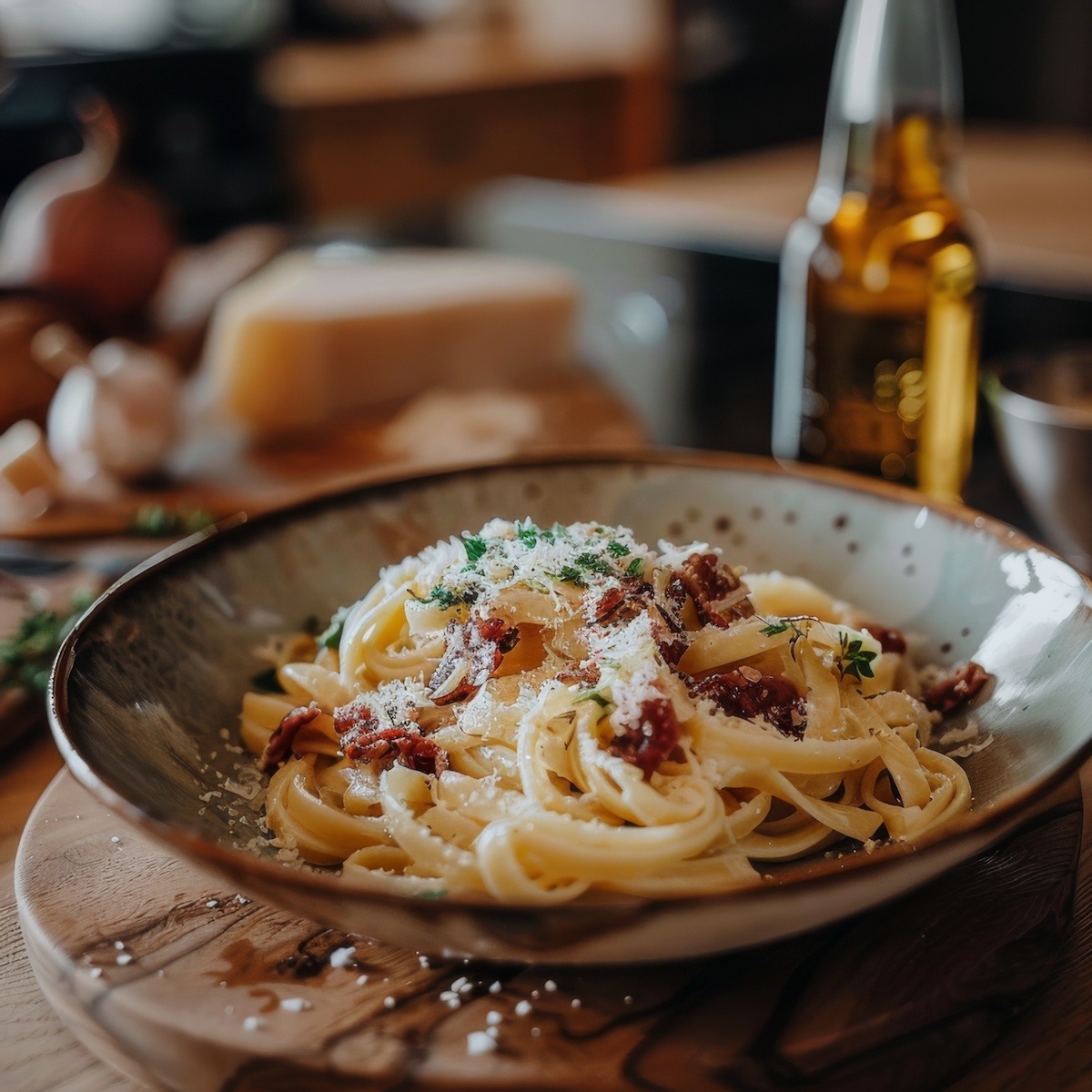
History of Pasta Carbonara
The history of Pasta Carbonara is as rich and flavorful as the dish itself, albeit shrouded in mystery and debate. While its precise origins remain uncertain, several theories exist regarding how this iconic Italian dish came to be.
One popular theory suggests that Pasta Carbonara has its roots in Rome, emerging as a simple yet hearty meal for Italian charcoal workers, or “carbonai,” during the mid-20th century. According to this narrative, these laborers utilized readily available ingredients such as eggs, cured pork (often guanciale or pancetta), and cheese to create a nourishing and satisfying pasta dish that could be prepared quickly over an open flame.
Another theory traces the origins of Pasta Carbonara to the American occupation of Italy during World War II. Some believe that American soldiers stationed in Italy introduced the dish, drawing inspiration from their rations of bacon and eggs. They adapted it with local ingredients, such as pasta and cheese, resulting in a fusion of Italian and American culinary influences.
However, despite these theories, the true origins of Pasta Carbonara remain somewhat elusive, with no definitive evidence to support any single narrative. Instead, the dish likely evolved through a combination of cultural influences, regional traditions, and culinary creativity.
What is clear, however, is that Pasta Carbonara has become firmly entrenched in Italian cuisine and culture, beloved by locals and admired by food enthusiasts worldwide. Its popularity has led to countless variations and interpretations, each offering a unique twist on the classic recipe while still paying homage to its humble beginnings.
Whether enjoyed in a cozy trattoria in Rome or prepared at home with family and friends, Pasta Carbonara continues to evoke a sense of comfort, tradition, and culinary delight, ensuring its place as one of Italy’s most cherished culinary treasures.

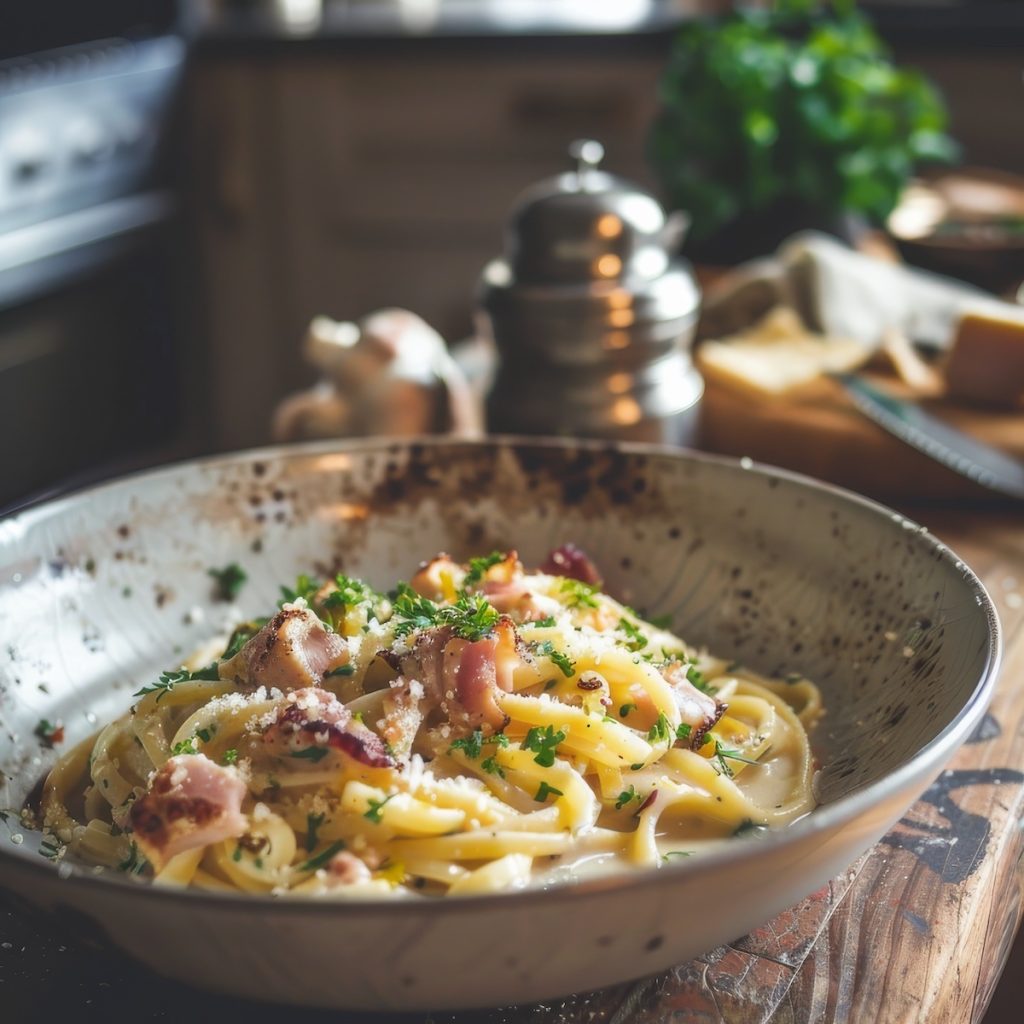
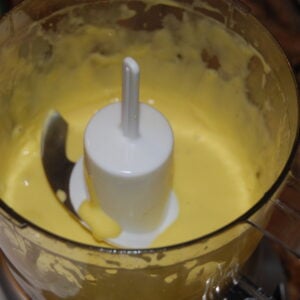
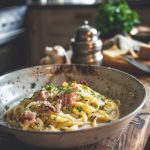

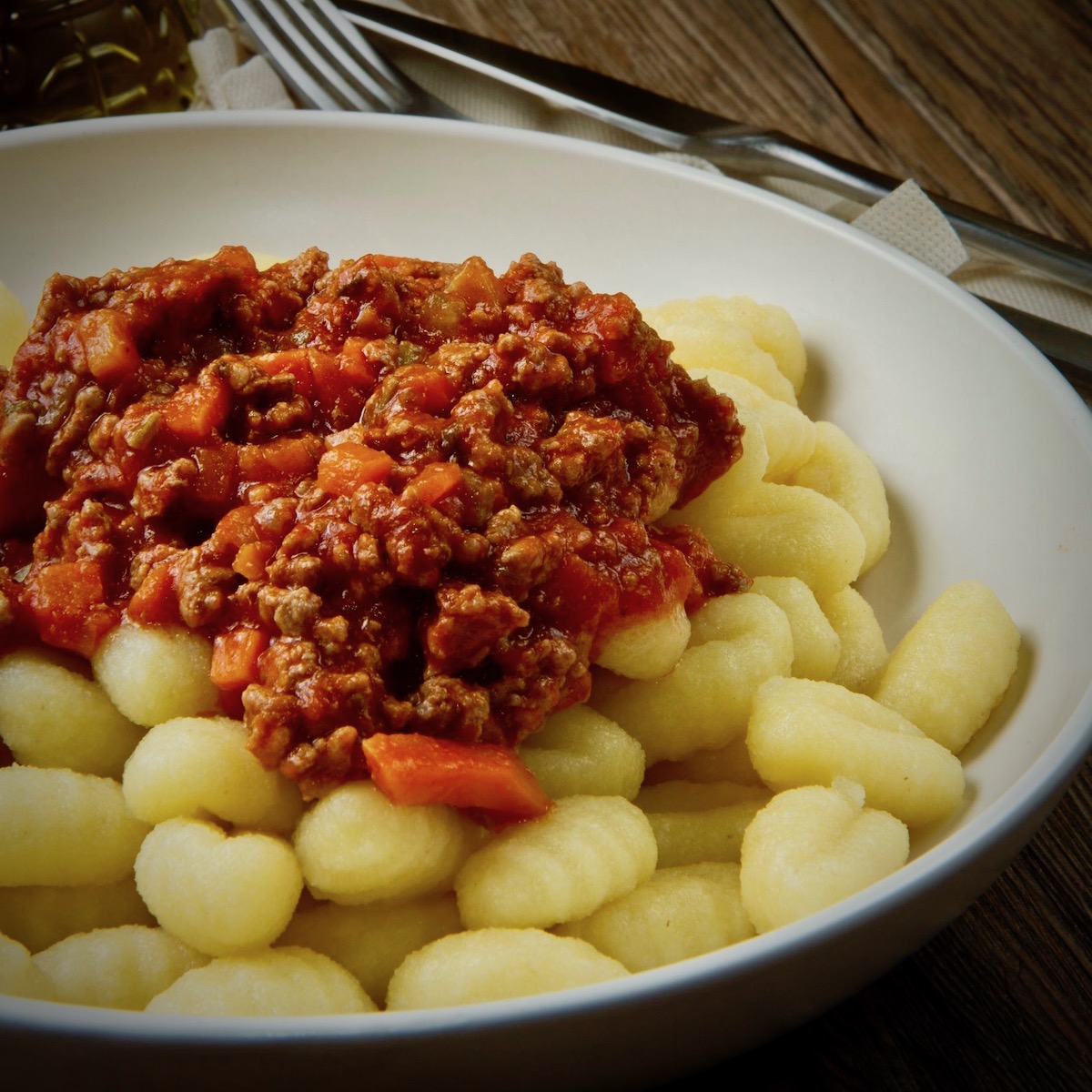
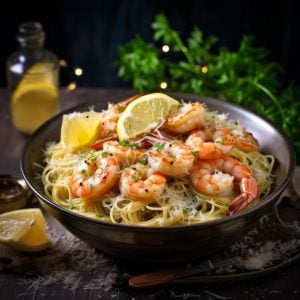
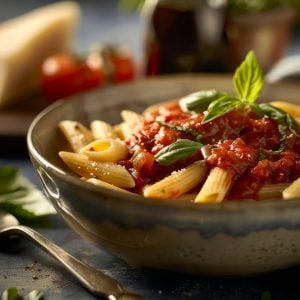
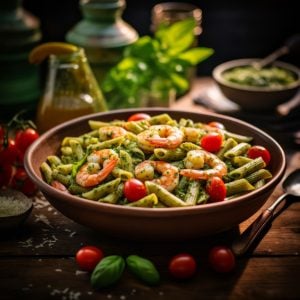
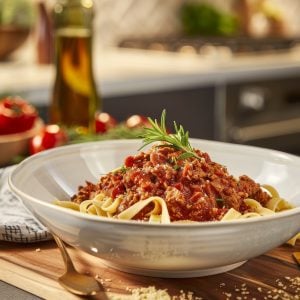
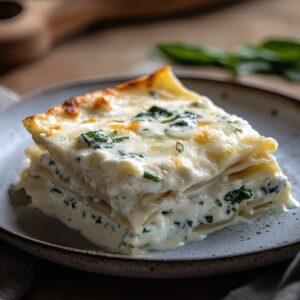
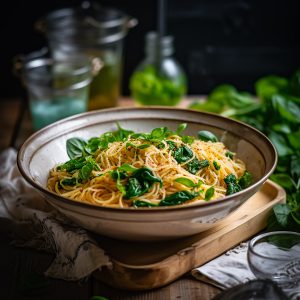


One Response
Great recipe ! I added peas to mine as well and it is just as good cold the next day!